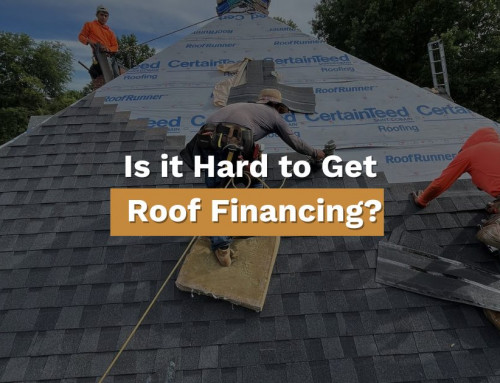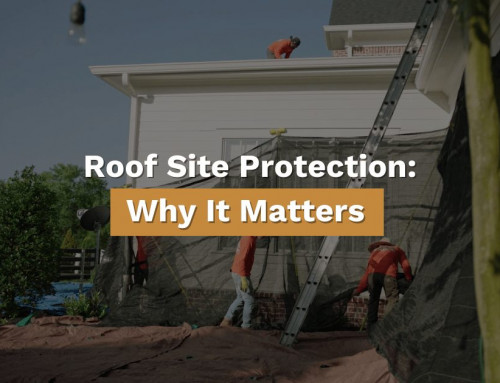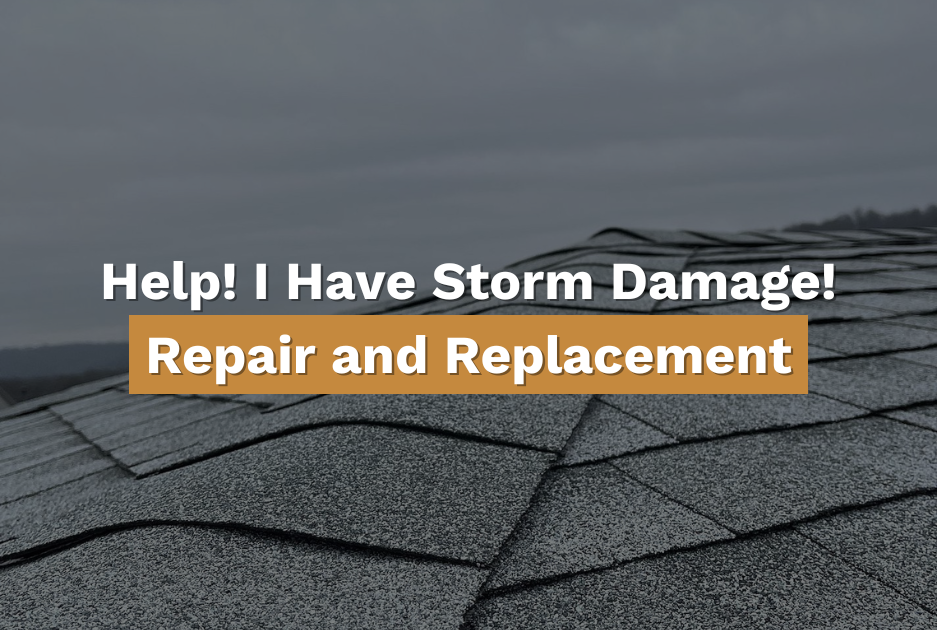
Highlights for Storm Damage
Strong winds, heavy rains, scorching sun, and massive snowfall – your home’s roof takes a beating 365 days a year. These annual and relentless weather events can leave you with roof storm damage and even cause leaks that can impact your home’s interior. A roof leak can arise from severe rainstorms, leading to significant property damage if not addressed promptly.
Table of Contents
What roof storm damage might look like
Sometimes, the signs of a damaged roof are obvious, like water spots on a ceiling, curled buckling, or missing roof shingles. You may also see broken or damaged roof flashing, wet walls, water issues around your home’s exterior, or winter ice damming. Inspecting the roof’s surface for visible damage, such as shingle issues or hail impacts, is crucial to prevent further complications.
What to look for:
-
Shingle condition. Missing shingles are one obvious sign, but pay attention to granule buildup and early signs of damage on your shingles. Hail storms can cause dings and dents in asphalt shingles, which should also be noted.
-
Missing flashing along the edges of the roof and skylights, vents, and chimneys.
-
Loose or peeling sealant along those same penetration points.
-
Water damage in the attic or along the ceiling.
Other times, the signs aren’t so obvious, which is when it might be time to call a professional roofing expert. The National Roofing Contractors Association recommends that homeowners have their roofs inspected by a professional twice a year—once in the fall and once in the spring.
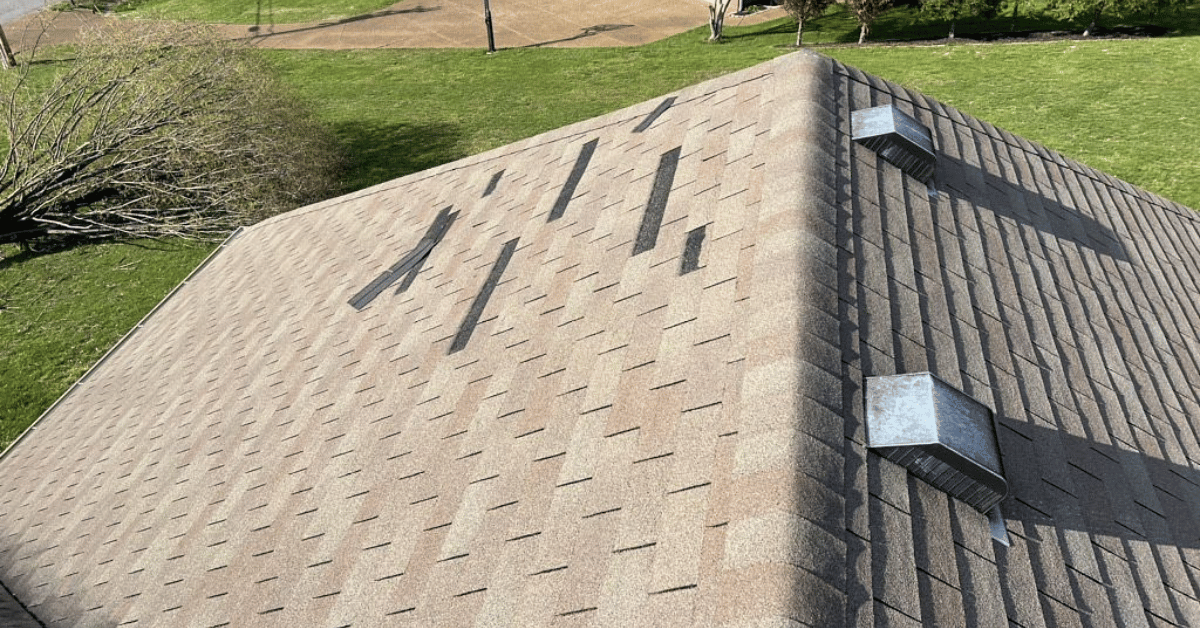
Assessing Storm Damage
After a storm, it’s crucial to assess the damage to your roof to determine the necessary repairs. Start by inspecting your roof for visible signs of damage, such as missing shingles, loose or peeling sealant, and water damage in the attic or ceiling. Pay close attention to the condition of your shingles; missing shingles are a clear indicator of storm damage. If you notice any of these issues, addressing them promptly is essential to prevent further damage to your home’s interior. Other times, the signs aren’t so obvious, which is when it might be time to call professional roofing companies for a thorough inspection.
Identifying Types of Storm Damage to Roofs
Storms can cause damage to your roof, each requiring different repair approaches. Here are some common types of storm damage:
-
Hail Damage: Hail can leave dents and cracks or even loosen roofing materials, flashing, and gutters. These impacts can compromise the integrity of your roof, leading to potential leaks.
-
Wind Damage: Strong winds can tear off shingles and shift flashing out of place, exposing your roof to water infiltration and further damage.
-
Rain Damage: Heavy rains can penetrate the roof, causing leaks and water damage to your home’s interior. Look for signs of water stains or dampness in your attic or ceiling.
-
Tree Damage: Falling branches or debris can puncture or crack your roof materials, necessitating immediate repairs to prevent water from entering your home.
Understanding these types of damage can help you better assess the condition of your roof and take appropriate action.
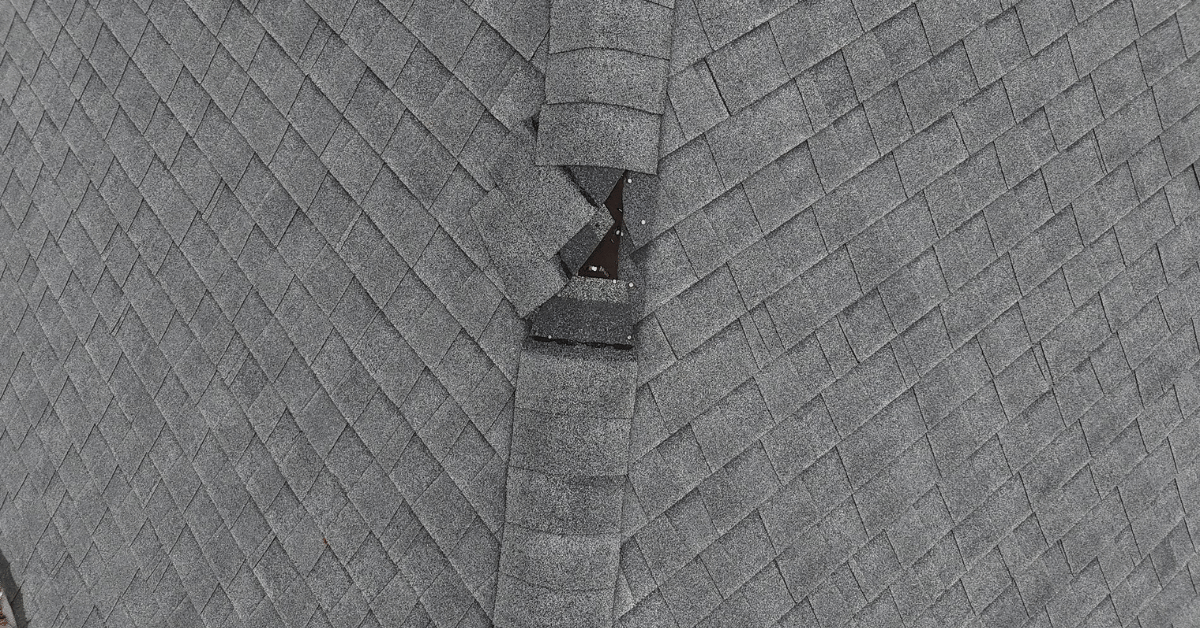
Inspecting the Roof for Damage
Roof Condition Assessment
Inspecting your roof for damage after a storm is crucial to identify potential issues before they become major problems. A thorough roof condition assessment involves checking for signs of damage, wear, and tear on various components of your roof. Here’s what to look for:
-
Missing or damaged shingles: Check for missing, loose, or damaged shingles, which can compromise the integrity of your roof.
-
Cracked or broken tiles: If you have a tile roof, inspect for cracked or broken tiles, which can allow water to seep into your home.
-
Loose or peeling sealant: Check the sealant around chimneys, vents, and skylights for signs of damage or deterioration.
-
Gutter damage: Inspect gutters and downspouts for damage, sagging, or blockages, which can cause water to accumulate and damage your roof.
-
Roof leaks: Look for signs of roof leaks, such as water stains, mineral deposits, or warping of roofing materials.
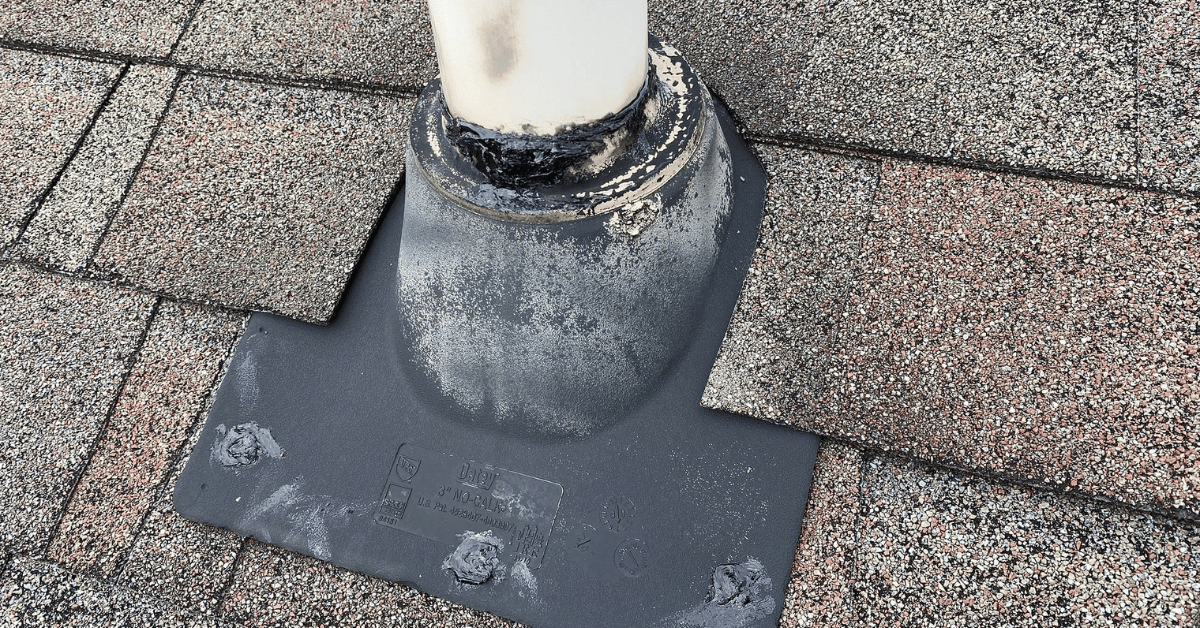
How to start the process of roof replacement
Once you’ve assessed the damage, the next step to replacing your roof is to request an estimate, mainly if significant damage necessitates replacing the entire roof.
At Long Roofing, an expert will sit down with you and your family to select the perfect roofing materials — from the protective underlayment to the asphalt shingle or other types of shingles that will cover your whole roof system.
We’ll also work through financing options, discuss warranty packages, and accommodate your schedule to find the perfect day to install your new roof.
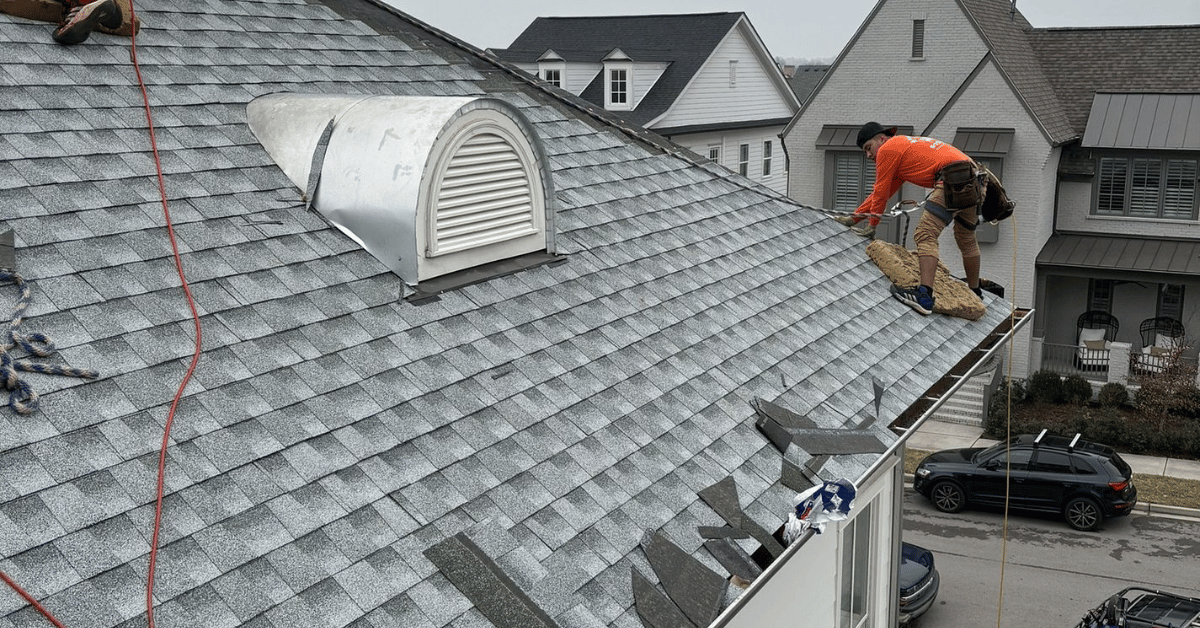
Finding a Reliable Roofing Contractor
Finding a reliable roofing company or contractor is essential to ensure your roof is repaired or replaced correctly. Here are some tips to help you find a trustworthy roofing contractor:
Qualities of a Good Roofing Contractor
A good roofing contractor should possess the following qualities:
-
Experience: Look for a contractor with extensive experience in roof repairs and replacements. An experienced contractor will be familiar with various roofing materials and techniques.
-
Licenses and Certifications: Ensure the contractor is licensed and certified to work in your state. This guarantees they meet the necessary standards and regulations.
-
Insurance: Verify that the contractor has liability and workers’ compensation insurance. This will protect you from potential liabilities during the roofing project.
-
Reputation: Check online reviews and ask for referrals from friends and family. A contractor with a solid reputation is more likely to provide quality work.
-
Communication: Choose a contractor who is responsive to your calls and emails. Good communication is crucial for a smooth and successful roofing project.
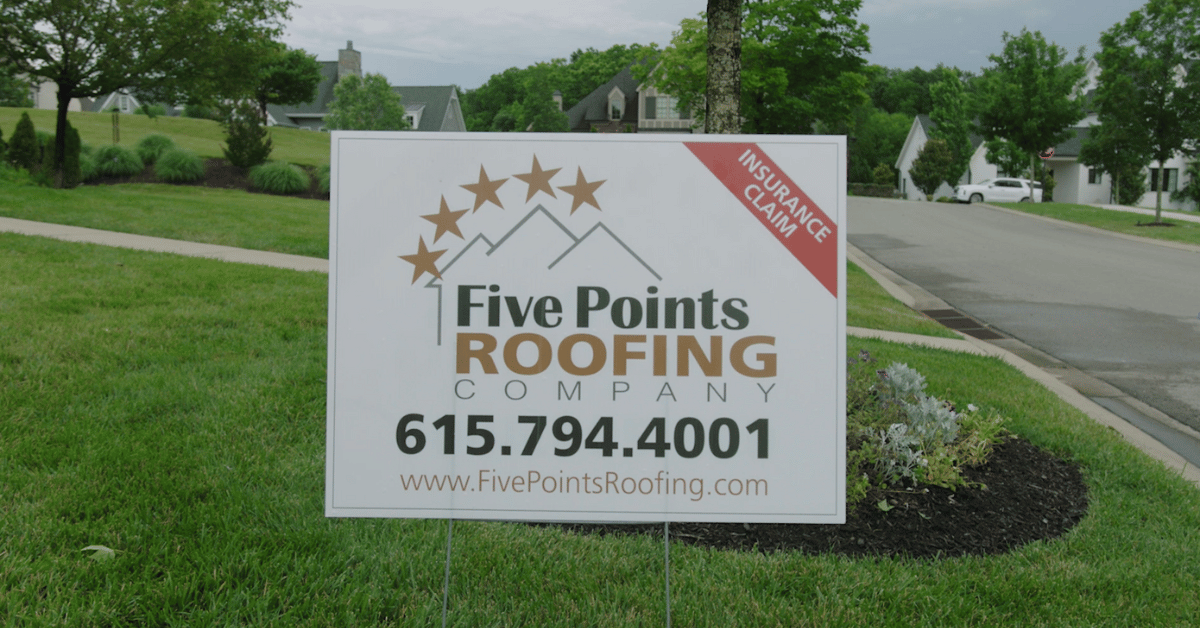
Questions to Ask a Roofing Contractor
When hiring a roofing contractor to inspect or repair your roof, it’s essential to ask the right questions to ensure you’re working with a qualified professional. Here are some questions to ask:
-
What experience do you have with roof repairs and replacements?
-
Are you licensed, bonded, and insured?
-
Can you provide references from previous clients?
-
What is your process for inspecting and assessing roof damage?
-
What types of roofing materials do you work with, and what are the benefits of each?
-
Can you provide a detailed estimate of the costs and timeline for the project?
-
Do you offer any warranties or guarantees on your work?
What to Expect from a Roofing Contractor
When hiring a roofing contractor, you can expect the following:
-
Thorough Inspection: The contractor will conduct a detailed inspection of your roof to assess the extent of the damage.
-
Detailed Estimate: You will receive a comprehensive estimate outlining the cost of materials and labor for the repairs or replacement.
-
Timeline: The contractor will provide a timeline for the completion of the work, ensuring you know what to expect.
-
Regular Updates: The contractor will keep you informed about the progress and any potential issues throughout the project.
-
Warranty: A reputable contractor will offer a warranty on both the work and the materials used, giving you peace of mind.
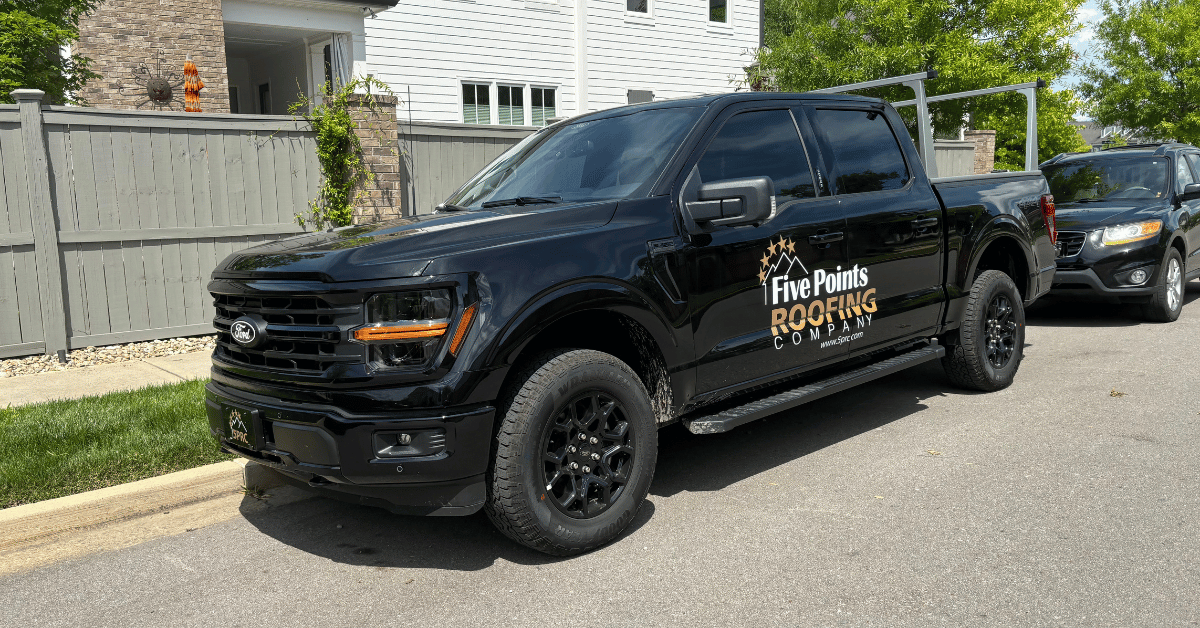
Additionally, inquire about the contractor’s experience with your specific type of roof, whether it’s asphalt shingles or a metal roof, and their expertise in handling the insurance claim process. Make sure they offer a range of roofing services, including roof installation, roof repair, and roof replacement, to meet all your needs.
Following these guidelines can help you find a reliable roofing contractor to restore your roof to its best condition.
Roof Repair vs. Replacement
When to Repair vs. Replace
Deciding whether to repair or replace your roof can be a difficult decision, especially if you’re not sure what to look for. Here are some guidelines to help you determine whether a roof repair or replacement is the best option for your home:
-
Repair: If your roof is relatively new (less than 10 years old) and has minor damage, such as a few missing shingles or a small leak, a repair may be the best option. Repairs can be less expensive than a full replacement and can extend the life of your roof.
-
Replace: If your roof is old (more than 20 years old), has significant damage, or is nearing the end of its lifespan, a replacement may be the best option. Replacing your roof can provide a new warranty, improve energy efficiency, and enhance the appearance of your home.
It’s essential to consult with a professional roofing contractor to determine the best course of action for your specific situation. They can assess the condition of your roof and provide a recommendation for repair or replacement.
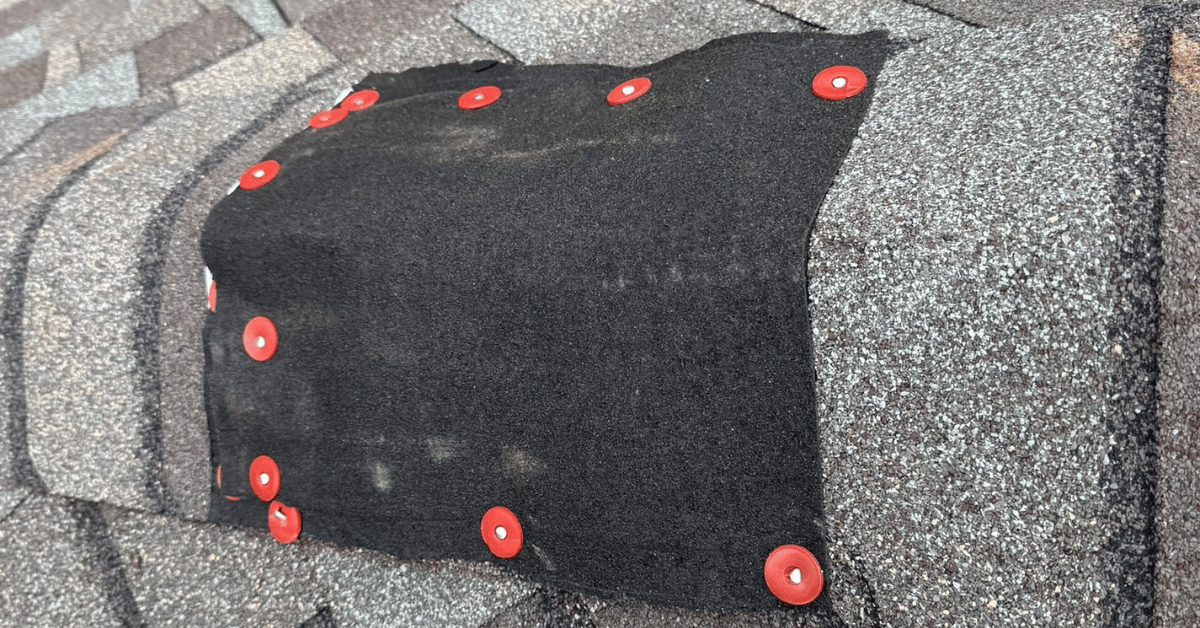
What your homeowner’s insurance covers
Figuring out what your homeowner’s insurance covers and does not cover can be confusing.
Homeowners insurance covers your roof in cases where it is damaged for reasons outside of the homeowner’s control – a few examples are fire and vandalism. Your policy will also usually cover damage from extreme weather events or “acts of God” like hurricanes and tornadoes. Similarly, roof damage caused by moderate weather incidents such as hail, wind, and rain are often covered by homeowners insurance.
When filing a claim, it’s important to thoroughly document any damage that occurred. Also, make sure you keep receipts for all work done on the home. Many policies will cover these expenses when submitted with a claim.
However, keep in mind that coverage will often depend on the age of your roof, the area you live in, and many other factors. The easiest way to know what’s covered or what’s not when it comes to storm damage is to contact your insurance company and go over the specifics of your policy, including what’s covered, the type of roofing material involved, and what your deductible may (or may not) be.
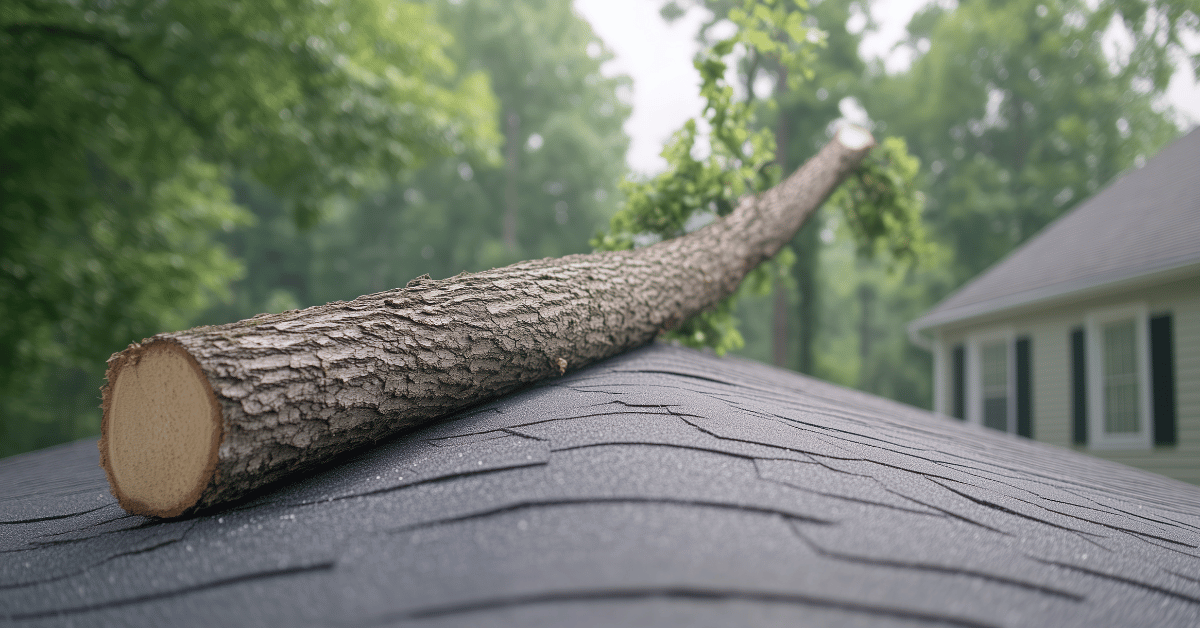
What your warranty looks like
When you purchase a new whole roof system, that roof will come with its own warranty. However, not all roof warranties are the same. Many homeowners learn the hard way that most roof warranties only cover the cost of roofing material or just manufacturer or installation defects—not weather-related issues.
Beware of Scammers after a roof inspection
Our last and final point about natural disasters is that they can attract dishonest contractors. Roof scammers will often make false promises and ask for payment up from before work begins or is complete. Do your due diligence when choosing roofing companies or contractors. Check with local and state agencies to determine if your anticipated contractor is licensed and qualified to do the work.


